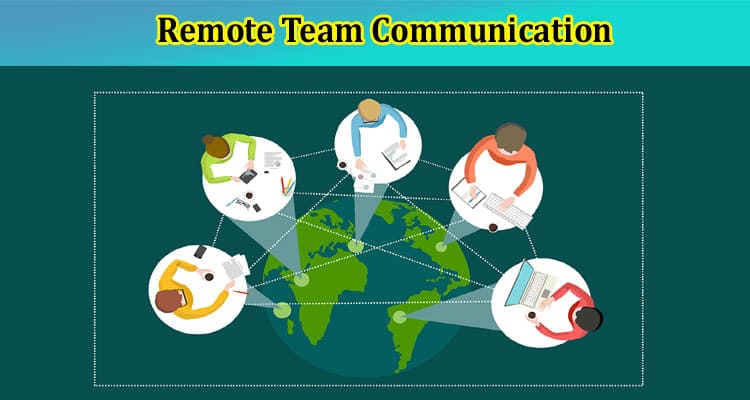In recent times, the work environment has seen significant shifts, notably in the area of remote work. Understanding the nuances and challenges associated with communication within remote teams is crucial as we adapt to these changes.
A 2023 report reveals that 98% of remote workers wish to continue this mode of working throughout their careers, underlining the widespread appeal and sustainability of remote work arrangements. This overwhelming preference for remote work brings to the forefront the need for effective communication strategies that can bridge the physical distances between team members.
In this post, we will delve into the best practices that can help remote teams communicate effectively, ensuring productivity and fostering a cohesive work environment.
Choosing the Right Communication Tools
The cornerstone of successful remote team communication lies in the selection of appropriate tools. Video conferencing platforms have become indispensable for face-to-face interactions, offering a more personal touch than traditional emails or phone calls. Messaging apps facilitate quick exchanges, ideal for day-to-day queries and informal discussions.
Equally important are project management tools, which provide a centralized space for tracking tasks and progress. A noteworthy addition to this toolkit is PDF proofing software. These tools are crucial in refining and finalizing documents, ensuring that everyone has access to the latest versions with clear, concise feedback. This aspect is particularly vital in preventing miscommunications that can arise from document reviews and edits.
Establishing Clear Communication Protocols
With diverse tools at their disposal, remote teams must establish clear communication protocols. This process involves delineating when and how to use different communication channels. For instance, email might be reserved for formal communications, while instant messaging could be used for quick, informal interactions.
Implementing scheduled check-ins, like weekly virtual meetings, offers a well-organized way for team members to stay updated on projects and address any issues. Implementing this structured approach minimizes confusion and ensures everyone, irrespective of their location, stays informed and in sync.
Creating an Open and Inclusive Remote Work Culture
Nurturing a culture of openness and inclusivity is a fundamental aspect of communication in remote teams. It is crucial to develop a workspace where the free exchange of ideas and constructive feedback is not just encouraged but celebrated.
This approach lays the foundation for a creative and innovative environment. Making every team member feel valued and heard, irrespective of their geographical location or time zone, is essential. Such a culture not only strengthens team bonds but also significantly enhances individual morale, leading to higher job satisfaction.
Additionally, it promotes a sense of belonging and respect among team members, encouraging diverse perspectives and fostering a positive work atmosphere that transcends physical boundaries.
Effective Use of Asynchronous Communication
The nature of remote work often necessitates a reliance on asynchronous communication. While synchronous (real-time) interactions are important, asynchronous communication offers much-needed flexibility. To use it effectively, team members should strive for clarity and comprehensiveness in their messages, reducing the need for follow-up questions. Providing clear timelines and expectations in these communications helps maintain a smooth workflow and respects the varying schedules of team members.
Prioritizing Transparency and Trust
Transparency and trust form the bedrock of any successful remote team. It’s important for leaders and team members to be transparent about workflows, decision-making processes, and the challenges they face. This honesty fosters a supportive environment where team members feel comfortable seeking help and offering assistance. Trust is built when team members know that their colleagues are reliable and open, which is particularly crucial in a remote setting where physical supervision is absent.
Regular Team Building and Engagement Activities
To mitigate the sense of isolation that can accompany remote work, it’s vital to engage in regular team-building activities. Virtual coffee breaks, online games, and digital hangouts can go a long way in developing personal connections and strengthening team bonds. These activities should be designed to be inclusive and considerate of the diverse locations and time zones of the team members. Regular engagement activities help in creating a sense of belonging and keep the team members connected on a personal level.
Continuous Feedback and Improvement
Finally, embracing a culture of continuous feedback and improvement is key to refining communication practices in remote teams. Regular feedback sessions can help identify areas of miscommunication or inefficiency, allowing teams to adapt and evolve their strategies. It’s crucial for team leaders to be receptive to this feedback and willing to implement changes that address the team’s evolving needs and challenges.
Final Thoughts
Effective communication is at the forefront of any successful remote team. By choosing the right tools, establishing clear protocols, fostering an inclusive culture, balancing asynchronous and synchronous communication, prioritizing transparency, engaging in team-building activities, and continually adapting based on feedback, remote teams can overcome the challenges they encounter due to distance. In doing so, they not only maintain productivity but also build a strong, cohesive unit capable of achieving remarkable success in the digital workspace.








